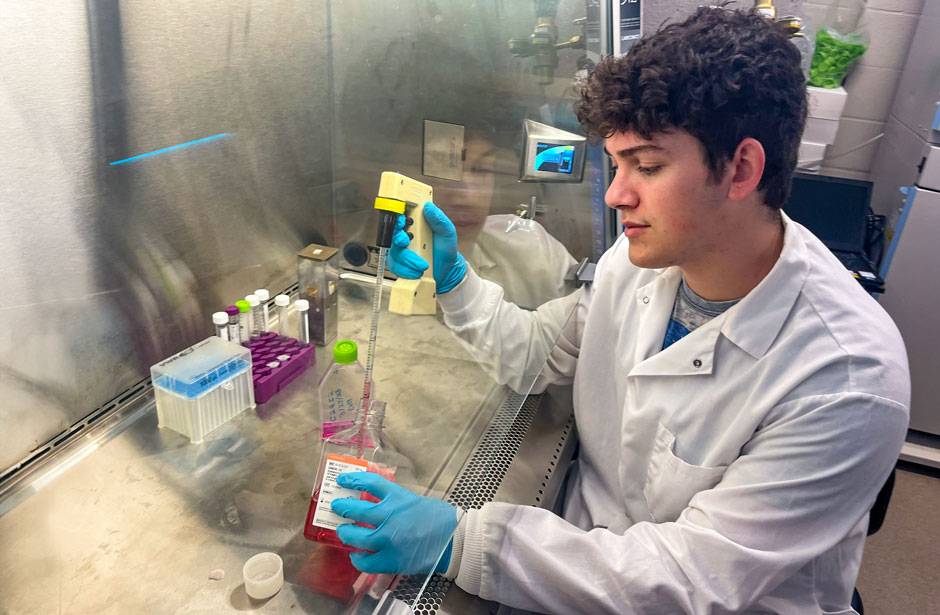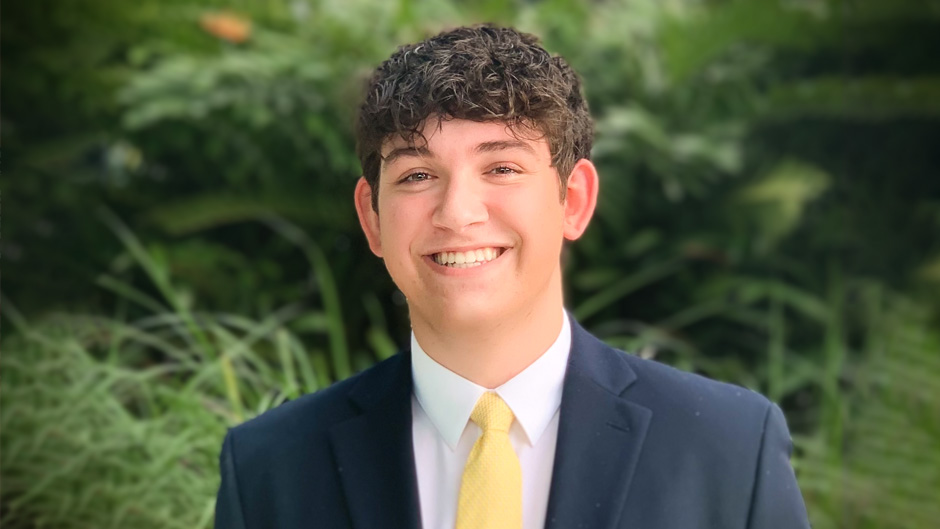Logan Beatty had an interest in science from a young age. He was drawn to television shows like “Bill Nye the Science Guy.” And his favorite episodes featured the oceans.
Beatty’s detailed recollections of these shows came in handy later, when his eighth-grade teacher challenged her students to enter a contest with ideas for science innovation. Beatty wrote about a trend he had noted in the documentaries: how some of the best inventions are often inspired by nature—like suction cups based on frog’s feet, Velcro, and bioluminescent lighting—and argued that the nation should invest in learning more about the ocean to spur future advances. The White House took notice.
Months later, Beatty and 10 other students met with then-President Barack Obama, along with the head of the National Science Foundation and the National Aeronautics and Space Administration, as part of the first group of Kid Science Advisors.
“From that point, I knew I was going to do science someday,” said Beatty, a junior at the University of Miami studying biomedical engineering in the College of Engineering.

Since then, Beatty has worked to gain research experience at the University in the lab of biomedical engineering professor Charles Huang, and at Akron Bio, a biotechnology company based in Boca Raton, Florida. Recently, Beatty was named a Goldwater Scholar, placing him in an elite group of 413 future scientists and engineers across the nation.
It is the first time in four years that a student at the University received the honor, which is one of the oldest and most prestigious scholarships in the United States. The award seeks to identify, encourage, and financially support college sophomores and juniors who show exceptional promise of becoming the next generation of research leaders.
“This scholarship meant so much to me because it reaffirmed my ability to be a scientist and made the career path less intimidating,” said Beatty, who is also a Stamps Scholar. “Also, the UM community that uplifted and supported me for this scholarship is something I’m incredibly grateful for. I’m also excited to be a part of the community of Goldwater Scholars—to learn from this group and to inspire ideas for the future.”
Since he began working in Huang’s lab two years ago, Beatty’s research has focused on osteoarthritis, the most common joint disease in the world. By working closely with Huang, Beatty learned a great deal about the condition and did experiments using stem cells to help prevent the body’s inflammatory response to traumatic knee injuries. Together, Huang and Beatty identified a key protein called MFG-E8, which is secreted from periodontal ligament stem cells, and was able to reduce inflammation in cartilage cells. It signaled a potential therapeutic for acute knee injuries, and Beatty went on to write most of the paper about it, which was published in Stem Cells and Development last summer. Huang said he wasn’t extremely surprised that Beatty was selected as a Goldwater Scholar.
“Very few undergraduate students can publish a paper as a first author,” Huang said. “It’s very difficult, but Logan is extremely hardworking. He learned everything in the lab very quickly and started jumping in to generate data for the publication.”
This summer, Beatty is looking forward to expanding his research knowledge by working in the lab of Alice Tomei, an associate professor of biomedical engineering, immunology, and surgery, to explore tissue engineering. He also will start his graduate school applications.
After college, Beatty hopes to earn a doctorate in biomedical engineering and to eventually lead research and development at a biomedical technology company to translate innovations into products that could improve people’s health.
“From high school biology class, I connected with many of the topics. And knew I wanted to take this knowledge and make it applicable to helping people and making a difference in the world,” Beatty said. “Biomedical engineering fit all of those criteria, and I’m so grateful I found the right major on the first try.”

